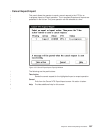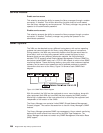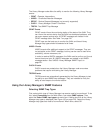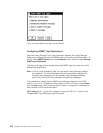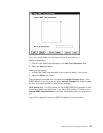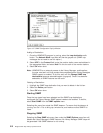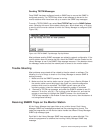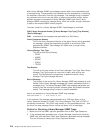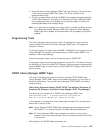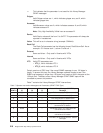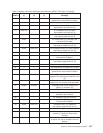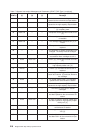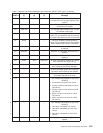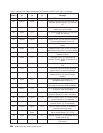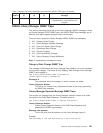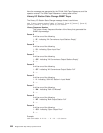3. Determine which Library Manager SNMP Trap Type was sent. This will be one
of the Library Manager SNMP Trap Types. This is the next field in the
space-delimited string.
4. Once it has been determined that the SNMP trap message was generated from
a 3494 Tape Dataserver, its identity, and which type of Library Manager SNMP
trap message was sent, the message can be tokenized again to remove the
message parameters and message string.
Note: It is a good idea to program the monitor station to handle conditions such as
an unrecognized Library Manager SNMP trap. Additional Library Manager
SNMP traps will be added, and documentation will be updated, as they are
updated.
Programming Tools
The Library Manager code contains an aid for the developer to help check the
monitors ability to handle all the Library Manager SNMP traps. This program is
located in c:\lm\exe.
To use the program, first make sure that SNMP is ENABLED and configured on the
Library Manager. The program will not generate any SNMP traps if SNMP is not
enabled on the Library Manager.
To start the program, open a service window and type in SNMPTEST.
If the program does not come to the foreground, use the Ctrl + Esc keys to bring up
the Window List. Select the SNMPTEST program. Use the program to generate the
required SNMP traps, and when done, exit the SNMPTEST program and close the
service window.
OPINT Library Manager SNMP Traps
This section discusses the format of the Library Manager OPINT SNMP traps.
Library Manager OPINT SNMP traps are the easiest to program for, since they all
follow the same format. The general Library Manager OPINT SNMP trap has the
following format:
3494 [Library Sequence Number] OPINT [OPINT Trap Number] [Parameter A]
[Parameter B] [Parameter C] [Actual Library Manager OPINT Trap Message]
The following is an example of an OPINT Library Manager SNMP Trap:
3494 C2444 OPINT 48 180--Acartridge containing invalid media has
been left in the device 180 feed slot. Remove the cartridge.
In this example, a cartridge with invalid media type has been left in the feed slot of
device 180 on library C2444.
Note: Library Manager OPINT SNMP trap messages pad all unused parameters
with a dash (—) in order to maintain the space delimited architecture.
Note: All Library Manager SNMP trap messages are actually one line of text;
however, due to the printing process, some may take up several lines of text
in this manual.
Valid values for the OPINT tables parameters are:
Chapter 6. Advanced Operating Procedures 215



